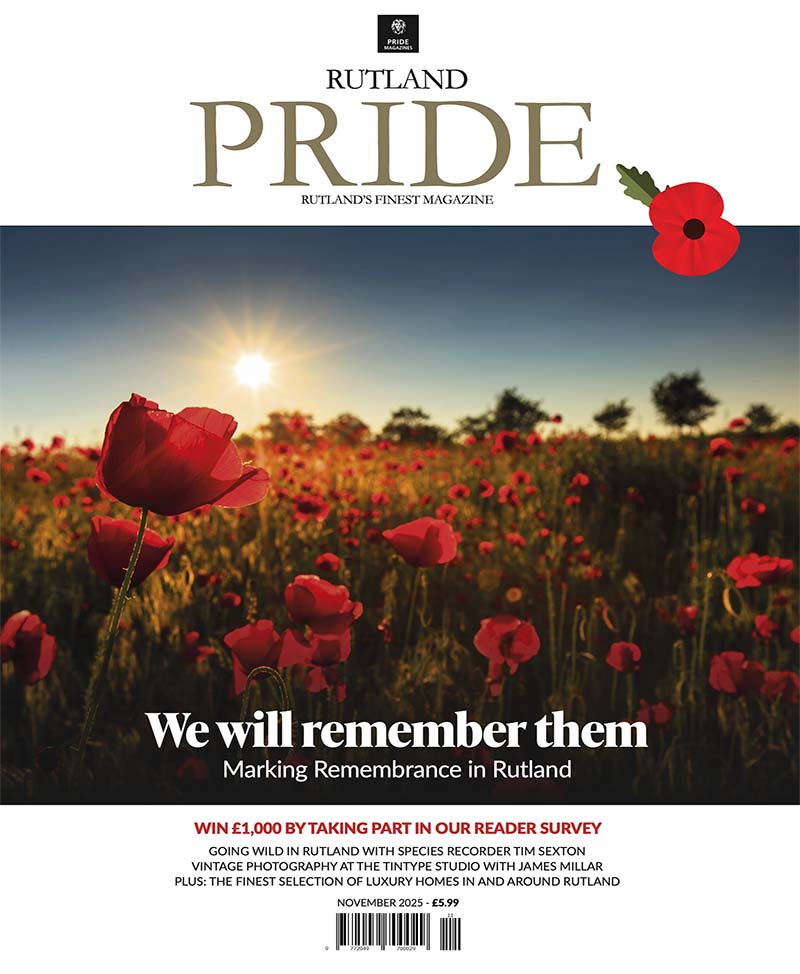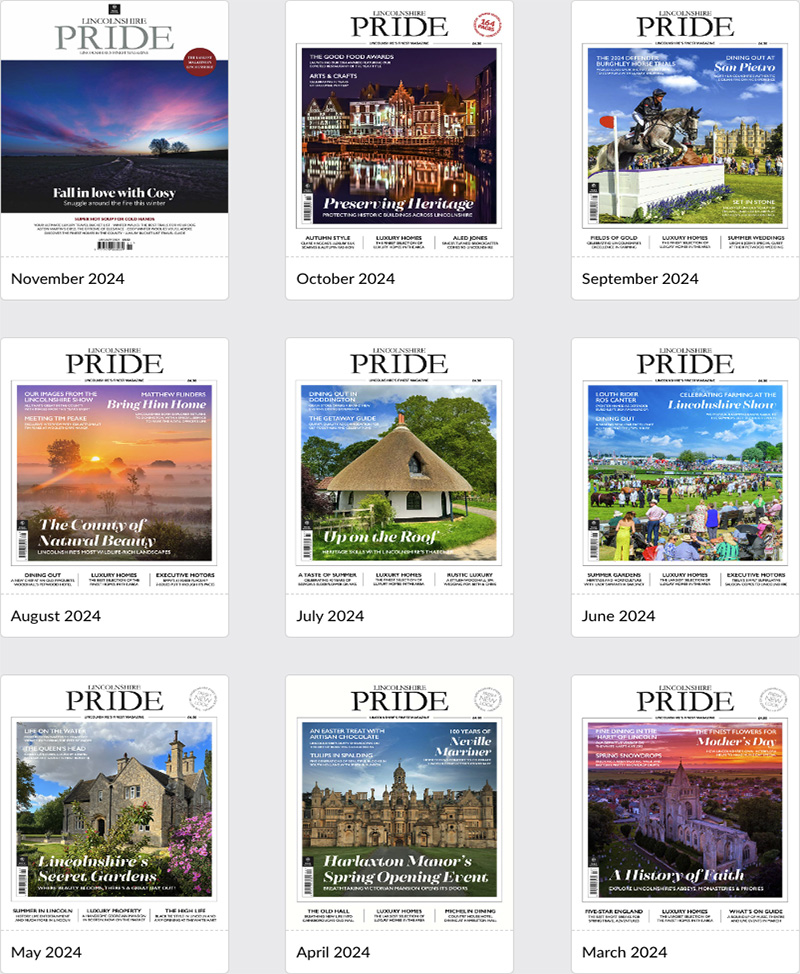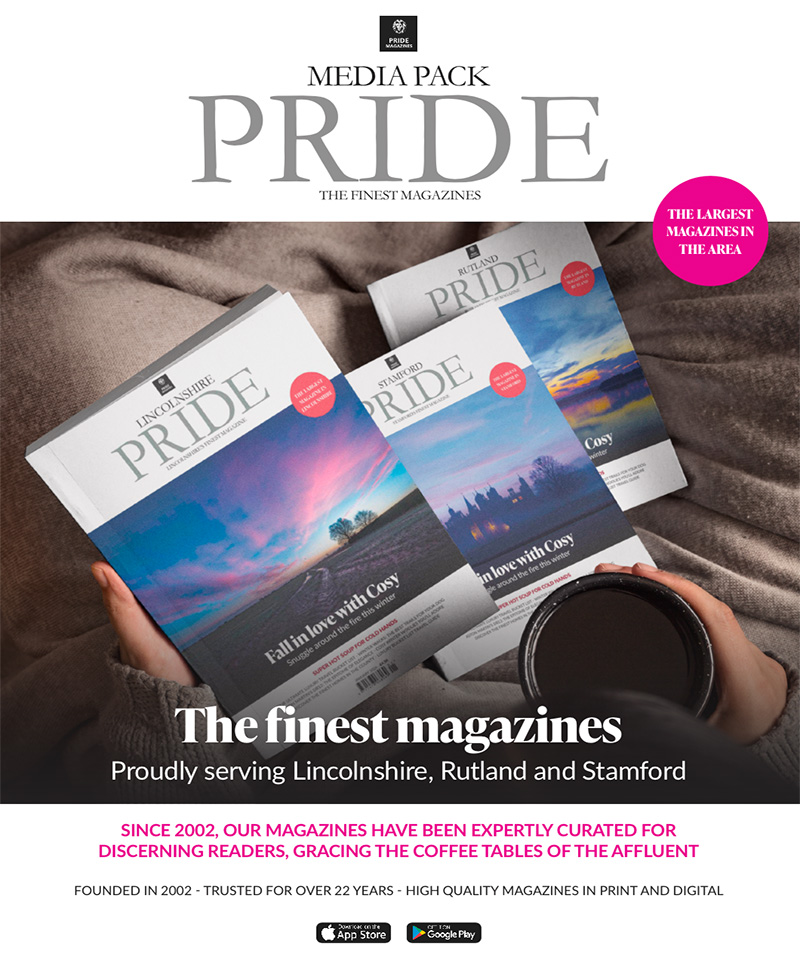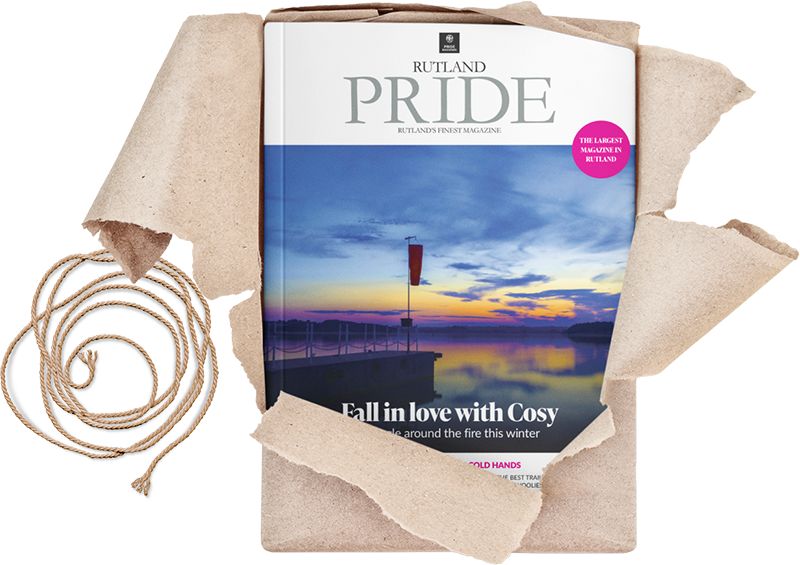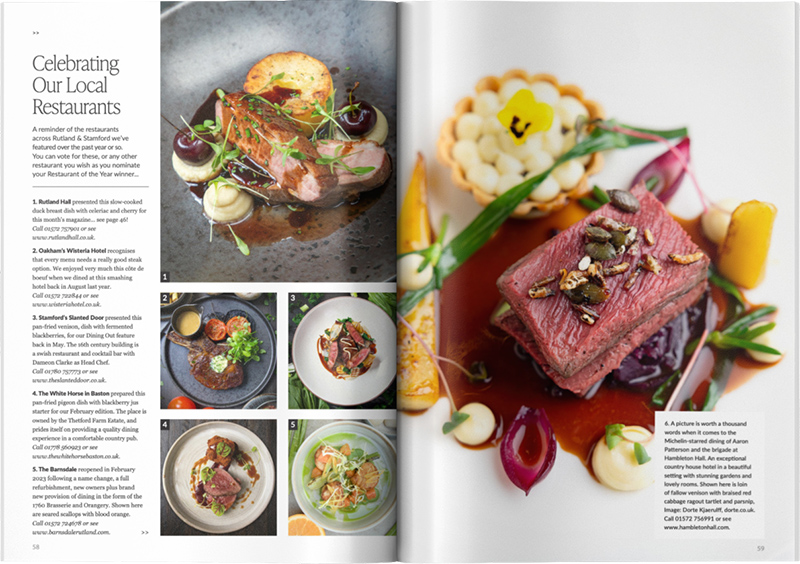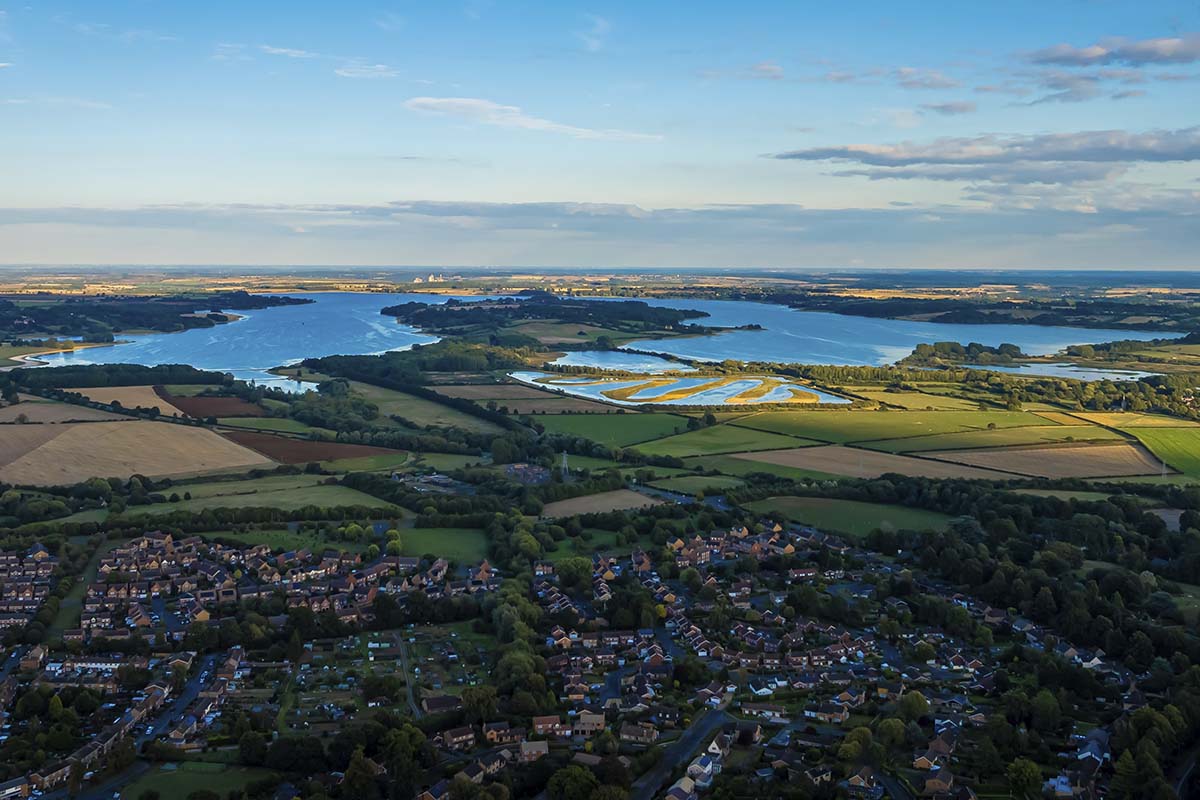
Rutland Water – A Deep Dive
An A-Z of the most famous attraction in England’s smallest county
A is for Aerial View
Back in the 1960s the demand for water across the East Midlands had increased, thanks to the expansion of places like Corby, Daventry, Northampton, Peterborough and Wellingborough. The need was recognised for a way to store and deliver water to keep the public supplied. Two civil engineers, Leonard Brown and Thomas Hawksley, had recently completed Northamptonshire’s Pitsford Reservoir in the previous decade, and Brown set out the criteria for finding a site which was suitable for the creation of a new reservoir. In 1967, the Gwash Valley upstream of Empingham and the nearby Chater valley to the south-west of Manton – the engineers determined – was the most suitable place for a reservoir to supply an anticipated 300,000,000 litres a day. Rutland County Council objected, the NFU objected, the CLA, CPRE and Oakham Rural District Council objected. Nevertheless, in 1968, the Welland and Nene (Empingham Reservoir) and Mid-Northamptonshire Water Board Bill was drafted, receiving Parliamentary approval in May 1970. John Winter was then appointed Chief Resident Engineer and moved to Rutland, starting work in October 1970. The Mid-Northamptonshire Water Board was replaced by the Anglian Water Authority in 1974. Empingham Reservoir was renamed Rutland Water following a campaign by local schoolgirl Jane Rutter. On 6th February 1975, John Winter closed the scour valve, impounding the water in the reservoir, which was finally full in 1979. The reservoir is up to 34m deep, 1,200 metres long, it covers 4.19 square miles and holds 124,000,000 cubic metres of water.
B is for Belle
For nearly 40 years Matt & Sarah Broadhead have been helping locals and visitors to the area to see the water in serene style, running The Rutland Belle pleasure cruiser from April to October and proving that sometimes, it really is better to travel than to arrive! The Rutland Belle is nearly 40 years old and was commissioned by Matthew’s father Trevor and his mother Joan, who ran the vessel on the water from 1986. The boat is 19 metres long, seven metres wide and weighs 29 tonnes. It’s propelled at about six knots by a 30” propeller, driven by a 72hp Gardner diesel engine requisitioned from the British Royal Train which used to transport senior royals to Sandringham or Balmoral. Today, the boat sails from Whitwell on the North Shore to Normanton on the South Shore from April to October, and it has a licensed bar and café for its 106 passengers. Look out for twilight osprey-spotting cruises, an hour and a half in duration on Saturday 24th May, Wednesday 28th May, Saturday 31st May with further dates in June and July. Gin Cruises take place on Friday July 25th and 8th August, with regular sailings from Whitwell on the hour and Normanton at 20 past the hour.
For more information call 01572 787 630 or see www.rutlandwatercruises.com.
C is for Cycling
Rutland Water has provided cycle hire since 1981, but from 2022, the site was taken over by Specialized, which builds and sells its own brand of mechanical and e-bikes, enabling you to try before you buy and get the best advice and aftersales service from the people who know their products best. From 1st April the company will be known as Specialized, not Rutland Cycling, but the company will still offer the same high standards, with a hire fleet of over 100 bikes and e-bikes, available from £50/day, and cycles to purchase from £600, plus a range of clothing and accessories.
Specialized, Whitwell, call 01780 460705 or see www.specialized.com.
D is for Dinosaur
In January 2022 Rutland awoke to the news that a 180,000,000 year old ichthyosaur fossil has been uncovered at Rutland Water by Joe Davis, a Conservation Team Leader, during the routine draining of one of the lagoon’s islands during landscaping work. Not only was it well-reserved…. it was quite a whopper too, 10 metres in length with a skull that weighs over one tonne. World expert Dr Dean Lomax was called in to lead an archaeological excavation, and today Rutland County Council is in consultation with Anglian Water to obtain the fossil with a view to displaying the ichthyosaur at Rutland County Museum subject to funding being in place by 2026.
E is for Eating & Drinking
Whether you’re enjoying a gentle walk around the shores of Rutland Water or you’re working up an appetite having hired a cycle, sooner or later you’ll want to stop for a drink or a bite to eat. Happily, you’re not short of options, as reflected in our shortlist of the best hotels, pubs, restaurants and cafés…
Hambleton Hall: Enjoy an exceptionally warm welcome and the best British cuisine at Hambleton Hall. Aaron Patterson and the team in the kitchen work alongside General Manager Chris Hurst and Restaurant Director Graeme Matheson to provide the best experience, one underwritten by its retention of a Michelin star longer than any other British dining room. Other accolades include its four AA rosettes and annual recognition in Rutland Pride’s Good Food Awards. 01572 756 991, www.hambletonhall.com.
The Barnsdale: Exceptional boutique country house hotel, reinvigorated by new owners Signet Hotels in January 2023. 1760 Brasserie and orangery providing everything from drinks to à la carte dining and afternoon tea. 01572 724678, www.barnsdalerutland.com.
Rutland Hall Hotel: Country house hotel set in 70 acres right next to Rutland Water. Blossoms provides great dining with stunning lakeside views and there’s a new wellness facility, Four Roots, to enjoy as well. 01572 757901, www.rutlandhall.co.uk.
The View, Rutland Nursery: Ideal for morning coffee, brunch and lunchtime dining. Nice al fresco dining spaces when the sun’s shining. 01572 498720, www.rutlandnursery.co.uk.
The Finch’s Arms: Very welcoming and traditional bar with a smart restaurant overlooking Rutland Water. 01572 756 575, www.finchsarms.co.uk.
F is for Fishing
Rutland Water is predominantly associated with fly fishing for brown or rainbow trout (from March to January), although it’s popular too for year-round predator fishing of species like pike, perch and zander. Rutland Water Fishing Lodge at Edith Weston is staffed by Neil Atkins, Robbie Winram and the team, who provide day licenses from £27 (catch and release) as well as licenses for those seeking to take away their catches. The reservoir is stocked with 70,000 trout each year from February, which grow to up to 10lbs within a season. There’s a tackle shop too and powered boat hire is available from £19. Tuition from the lodge is available with Peter Hartley for beginners or for angling experts seeking to capitalise on Peter’s familiarity with Rutland Water. If you’re lucky, you may even better Tom Cooper’s July 2013 record of a 17lb, 6oz brown trout! Call 01780 686441 or see www.anglianwaterparks.co.uk.
G is for Golf
Rutland Water Golf Club enjoys what must be the best setting of any golf club anywhere in Britain. Located right next to the reservoir, the former farm was converted in 1994. Today golfers have a choice of the 18-hole championship Normanton course or the 9-hole par three Hambleton course, both of which enjoy spectacular views. Tuition is available courtesy of club pro John Pengellly and the club welcomes non members. A good clubhouse and courtyard bar are a pleasure and for extended breaks there are eight rooms and a self-catering cottage for guests to stay in on site too. See www.rutlandwatergolfcourse.co.uk.
H is for Hambleton Peninsula
The Hambleton peninsular is about 3,500 metres long and around 1,000 metres width. Its first mention was as a parish in the Hundred of Martinsley (alongside Oakham and Rildington) which, along with Alstoe, became a Wapentake in 1086, this was semi-independent, known as Roteland, later Rutland. Hambleton is more correctly known as Upper Hambleton, since the civil parish villages of Middle Hambleton and Nether Hambleton ceased to exist after the creation of Rutland Water. The peninsular is home to about 200 people, as well as the 12th century St Andrew’s Church and Hambleton Hall, the former hunting lodge of Walter Marshall and Eva Astley Paston Cooper who entertained Noël Coward and Malcolm Sargent at the house before it was converted into a hotel in 1979.
I is for Island
Browns Island is the area of land south west of Hambleton in what would have been the highest point in the village of Nether Hambleton prior to its flooding.
J is for Jurassic
Rutland Water’s geology dates back from the Jurassic era – 200m years ago to 150m years ago, after the triassic period and prior to the cretaceous period. The climate was warm and wet, and there was an abundance of feathered dinosaurs, flying insects and marine reptiles.
K is for Kingfisher
Often spotted around the reservoir, look out for the Kingfisher with its 25cm wingspan, bright blue back and metallic copper breast.
L is for Limnological Tower
That’s the proper name for the sticky-uppy tower that you see on Rutland Water south of Barnsdale. Its purpose is to test water temperature, oxygenation and fluorescence (to detect algal content) at two metre intervals, drawing off water for testing. The tower also incorporates a weather station and returns real-time information to the reservoir control centre.
M is for Maya & Mr Rutland
Maya & Mr Rutland are VIP (or rather VIB – ‘birds’) residents of Rutland Water. Maya arrived in Rutland in 2009 and her name is a contraction of Manton Bay. Mr Rutland raised the first chick to be born at Rutland in 2001 and Maya has fledged 38 of the 278 osprey chicks born in Rutland.
N is for Normanton Church
Normanton Church is more correctly known as the Church of St Matthew, and there has been a church on the site since at least the 14th century, probably before that as there is a record of rector Hugo de Novo Castreo in the 13th century. The church was rebuilt by the Heathcote family who resided at Normanton Park from 1729 and rather unceremoniously cleared much of the village around Normanton, relocating locals to Empingham so they could make space for parkland during their ambitious development of the estate. An older church was rebuilt in 1764 by the 3rd Baronet. Two generations later Sir Gilbert Heathcote married into Clementina Willoughby who would later take the title of Baroness Willoughby d’Eresby, heiress to the Ancaster Estates. After the death of the Countess of Ancaster in 1924/5 Normanton Hall was demolished, although the church, which served as a private chapel for the family, survived. Repairs were made to the building in 1964, a decade before it was saved from demolition with the proposed creation of Rutland Water. Normanton Church was deconsecrated in 1970 and raised to 60cm above the expected water level.
O is for Osprey Project
2026 will see some significant milestones for the Rutland Osprey Project and for the Leicestershire and Rutland Wildlife Trust. Firstly, it will be 50 years since the creation of the reserve at Rutland Water and 30 years since the first relocation of ospreys from nests in Scotland to Rutland Water, courtesy of Roy Dennis, who relocated between 8 and 12 chicks a year, each one five or six weeks old. He was later joined by Tim Mackrill who worked extensively on the project along with Tim Appleton. Another milestone occurred 25 years ago when Mr Rutland – who had been relocated a few years before – mated with an unringed female osprey from Scotland and the two successfully raised a chick, the first to be born at Rutland Water. In total, 278 osprey chicks have been fledged and Rutland Water has become synonymous with the birds, which were due to return as we spoke to Senior Visitor Centre and Events Officer Matt Scase. Matt was on tenter hooks awaiting the imminent return of Rutland’s 40 or so ospreys, and with a record 25 chicks born at the reserve last year it’s hoped that this year’s chicks will take the nature reserve over the milestone of 300 Rutland-fledged chicks! You can view the live feed of the osprey nest at the reserve by visiting the reserve’s live camera feed at www.lrwt.org.uk.
P is for Photography
Rutland Water is picture perfect, but if the beauty of the location itself exceeds your technical skills, don’t worry… Conservation Ranger Luke Russel can help you finesse your photography and capture local wildlife in all its glory with his half-day beginners wildlife and landscapes photography course. Luke has been working at The Anglian Water Birdwatching Centre for Nine Years and coordinates the 65 Park Lover Volunteers around the Park. In addition he helps to curate the visitor engagement programme and as a self-taught photographer, he hosted his first photographic courses last year, which proved an immediate success. This year the number of photography courses has been expanded with each one lasting abound three hours, and comprising both classroom and practical elements. “People can turn up with camera phones or full-sized DSLR cameras,” says Luke. “The days are ideal for novices or for those who want to take their photography further, diving in the different settings and helping to avoid common problems like blurry shots. They’re enjoyable, engaging courses, underwritten by a good working knowledge of the reserve itself, enabling everyone to improve their photography and capture Rutland Water at its best, all year round!” Courses £30 from April to July, see www.anglianwaterparks.co.uk.
Q is for Quercus
Covering 234 acres in total, Anglian Water Wood’s species of trees include mature oaks (Quercus), willow and elm. In May the woodlands are a habitat for nightingales singing in the dense gorse and cuckoos too.
R is for Reservoir
Rutland Water is, above all else, a means to store and distribute water – around 124 million cubic metres of it. Along with Grafham and Pitsford, the reservoirs supply 1.5 million homes. Water is extracted into Rutland Water from the Welland at Tinwell and from Wansford. This ‘raw’ water is then treated locally before being supplied to homes and businesses. Anglian Water’s team of up to 300 engineers manage over 1,000 ‘assets’ of which Rutland Water is just one… albeit very big one!
S is for Sailing
Rutland Sailing Club was founded in August 1969, a whole six years before work commenced on the filling of the reservoir and ten years before it was full. When the club held its first AGM in 1973 it had 450 members. Now that figure stands at 1,000. The club prides itself on its inclusive community based ethos. It is open to recreational and competitive sailing from as young as seven years old. In addition to diverse fleets, ranging from cruisers to foiling boats, the club has a thriving Youth and Junior development programme that works in conjunction with our excellent Sailing School and a women’s group that meets weekly. The growing Sailability group enables disabled people with any impairment to enjoy sailing in a safe and fun environment. www.rutlandsailingclub.co.uk.
T is for Triathlons
The Dambuster Triathlon takes place on 22nd June, with a gruelling 1,500m swim, 40km cycle ride and 10km run. It will be followed by the Vitruvian middle distance triathlon in September. See www.dambustertriathlon.co.uk.
U is for Underwater
The village of Nether/Lower Hambleton was flooded during construction of Rutland Water, with the loss of a number of properties including Beehive Cottage, Ivydene and Redhouse Farm, Eade’s and Hoyles’ Cottage and Woodbine House, as well as Clarke’s and Charity’s Cottages East View (home to Harold & Winifred Tibbert) and April Cottage and Beech Farm. The latter was owned by Edna Lock who kept a herd of 50 Fresian cows.
V is for Visitor Centre
There are Visitors’ Centres for Rutland Water, at Sykes Lane and Normanton, with the Osprey Project visitor centre at Lyndon and the Birdwatching and reserve visitors’ centres at Egleton.
W is for Watersports
Sailing, windsurfing and kayaking are available at Rutland Watersports, Whitwell, April-August, 9am-6pm. See anglianwaterparks.co.uk.
X is for X Marks the Spot
Enjoy a treasure hunt at Rutland Water suitable for children and adults. About three hours entertainment. Ideal in conjunction with a walking and cycling day, £9.99, created by Treasure Trails, available in print or as a download. See www.treasuretrails.co.uk.
Y is for Youngsters
As May’s half term break and summer holidays beyond beckon, get those children and grandchildren away from their video games and out into the fresh air… Aqua Park reopens in May 2025 offering 8,000 square metres of fun and over 40 obstacles! See aquaparkgroup.co.uk.
Z is for Zen
Four Roots at Rutland Hall offers luxury wellbeing and mindfulness, either as a half-day or overnights experiences. See rutlandhall.co.uk.
See our full feature in the May edition of Rutland Pride at https://www.pridemagazines.co.uk/rutland/view-magazines?magazine=May-2025


